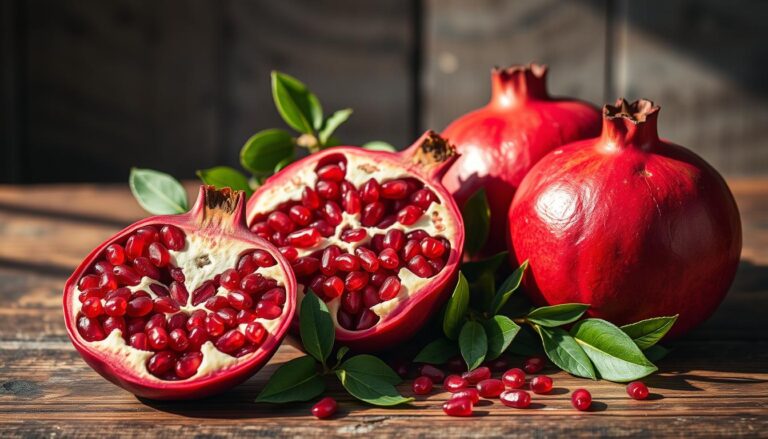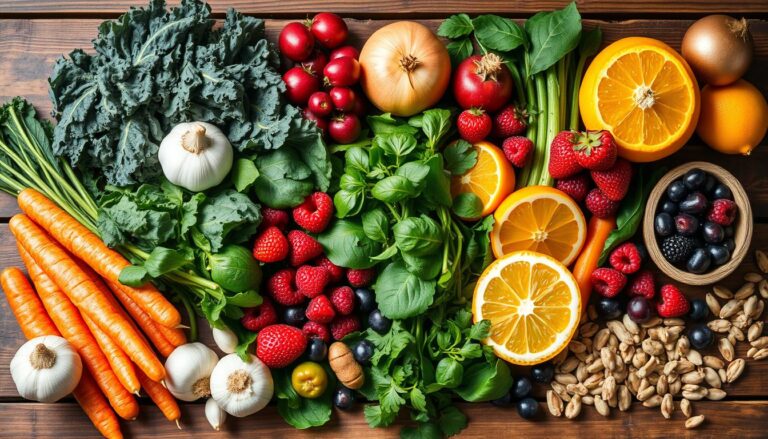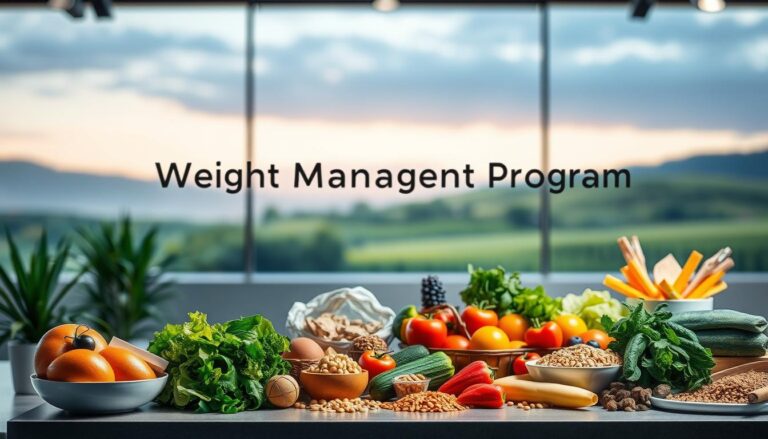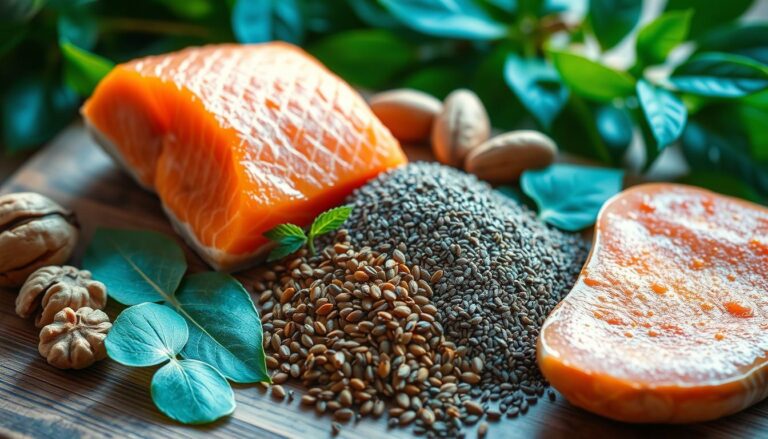Could achieving lasting results actually require abandoning strict diets instead of starting them? Research reveals that 80% of individuals regain lost mass within five years when relying on extreme calorie-cutting alone. This guide explores how science-backed eating patterns create sustainable success.
The latest Dietary Guidelines for Americans highlight a critical shift: prioritizing nutrient-rich meals over temporary restrictions. Studies show those focusing on whole foods like vegetables, fruits, and grains reduce chronic disease risks by up to 30% while naturally managing body composition.
Why do most plans fail? They ignore psychological triggers and metabolic adaptability. This article breaks down practical strategies—from portion awareness to flavor-focused meal prep—that align with how our bodies truly respond to nourishment.
Key Takeaways
- Nutrient-dense eating patterns lower risks of heart disease and diabetes while supporting metabolism
- Structured guidelines emphasize whole foods over calorie counting for lasting results
- Balanced plates with varied textures prevent boredom and promote consistency
- Personalized approaches account for lifestyle factors better than one-size-fits-all diets
- Mindful eating habits help break cycles of emotional or stress-driven consumption
Understanding the Basics of Weight Loss and Healthy Nutrition
Creating lasting change starts with grasping energy balance. Every meal provides fuel—when intake exceeds what your body uses, excess stores as fat. Research shows reducing daily intake by 600 calories supports gradual progress: 1,900 for men and 1,400 for women.

Energy Balance Fundamentals
Calories consumed versus burned determines results. A 500-750 daily deficit often works best. Pair smaller portions with activity—like swapping sugary drinks for water or adding walks.
Maximizing Meal Quality
Not all calories equal. Spinach offers more vitamins per bite than fries. Focus on foods packing fiber, protein, and antioxidants. Examples:
- Leafy greens instead of iceberg lettuce
- Quinoa over white rice
- Greek yogurt rather than sour cream
This approach keeps you fuller longer while meeting nutritional needs.
Key Elements of Weight Loss and Healthy Nutrition
Building meals around nutrient-rich staples forms the foundation of lasting progress. Focus on colorful plates that deliver maximum nourishment with minimal processing.
Power of Plant-Based Choices
Experts recommend filling half your plate with vegetables and fruit at every meal. These foods supply fiber that slows digestion, keeping hunger at bay. Frozen berries or canned peaches in juice work when fresh options aren’t available.
Swap refined grains for whole grains like oats or brown rice. Their complex carbohydrates stabilize energy levels better than processed alternatives. Pair with lean proteins for balanced nutrition.
Essential Nutrients from Multiple Sources
Include diverse protein foods like fish, beans, or tofu. These options support muscle maintenance while keeping meals interesting. Low-fat milk or yogurt adds calcium without excess calories.
Don’t fear fats—choose avocado or almonds in moderation. These provide vital nutrients and help absorb vitamins from other ingredients. Portion control remains key due to their calorie density.
Building Your Personalized Healthy Eating Plan
Customizing your approach to nourishment requires more than generic rules—it demands a system that adapts to your unique needs. The USDA’s MyPlate framework offers precise guidance while allowing personal preferences to shape daily choices.
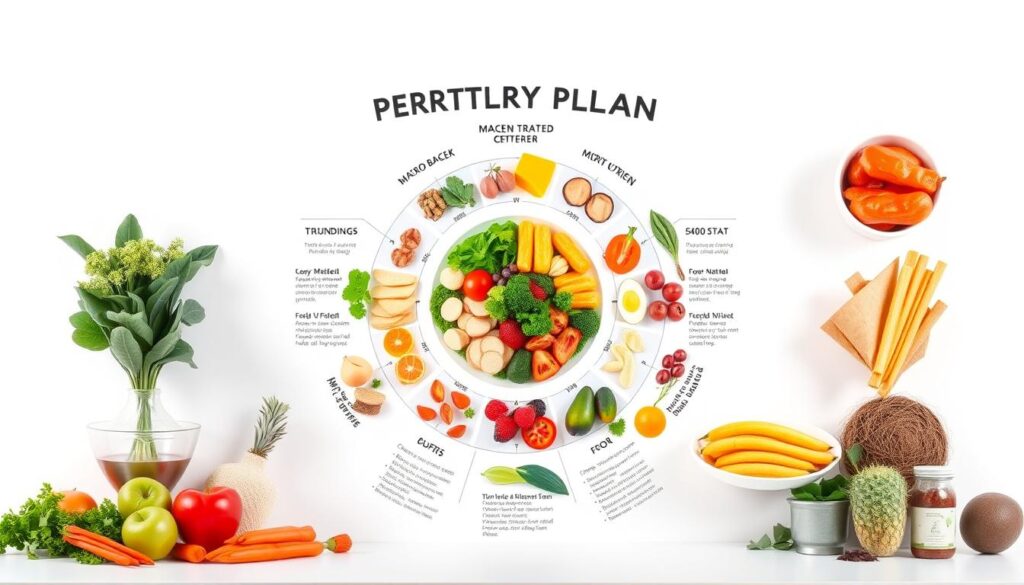
Interpreting USDA’s MyPlate Guidelines
This visual system divides plates into four food groups plus dairy. Recommended daily portions vary by age and activity level, but core principles remain consistent:
| Food Group | Recommended Portion | Examples |
|---|---|---|
| Fruits | 1.5-2 cups | Berries, citrus, apples |
| Vegetables | 2-3 cups | Broccoli, carrots, spinach |
| Grains | 5-8 ounces | Quinoa, oats, whole-wheat pasta |
| Protein | 5-7 ounces | Salmon, lentils, poultry |
Effective Meal Planning Strategies
Design weekly menus using seasonal produce and pantry staples. Batch-cook grains and proteins every Sunday to streamline weekday meals. Track consumption in a digital diary to spot trends and adjust portions.
The 12-week structure helps build sustainable habits. Week 1-4 focus on vegetable intake, while later phases introduce new cooking techniques. This gradual method prevents overwhelm and supports long-term adherence to your plan.
Smart Food Choices for Weight Loss
What if better food choices could simplify your journey? Prioritizing ingredients that deliver vitamins and minerals without excess calories creates sustainable momentum. Small swaps add up—like roasted chickpeas instead of chips or sparkling water flavored with citrus.

Low-Calorie, High-Nutrient Food Options
Leafy greens and colorful vegetables form the backbone of nutrient-rich foods. Spinach salads with grilled chicken or roasted Brussels sprouts provide fiber and protein. These keep you full for hours while supporting metabolic function.
Opt for snacks like air-popped popcorn or apple slices with almond butter. They satisfy cravings without the sugar crash. Studies show people who eat 3-4 servings of vegetables daily maintain progress 34% longer than those who don’t.
Healthy Substitutes for Comfort Foods
Craving mac and cheese? Try blended cauliflower with nutritional yeast. Want something crunchy? Bake zucchini fries instead of reaching for potato chips. These swaps cut fat and calories while keeping flavors bold.
| High-Calorie Item | Smart Substitute | Benefit |
|---|---|---|
| Sour cream | Greek yogurt | 63% less saturated fat |
| White rice | Cauliflower rice | 75% fewer calories |
| Ice cream | Frozen banana blend | No added sugars |
Limit sugary drinks and processed snacks, but don’t ban them entirely. Enjoy a small cookie or dark chocolate square occasionally. This balance prevents feelings of deprivation that often derail plans.
Practical Tips for Day-to-Day Healthy Eating
Mastering daily nourishment requires more than willpower—it demands practical systems. Oversized restaurant meals and bulk snacks have warped our understanding of reasonable portion sizes. Reset your approach with science-backed strategies that work in real-world kitchens and busy schedules.
Mindful Eating and Portion Management
Swap standard dinner plates for 9-inch alternatives. Studies show this simple change reduces food intake by 22% while maintaining satisfaction. Measure oils and nuts with tablespoons instead of eyeballing—a single extra ounce of almonds adds 164 unintended calories.
Create distraction-free zones during meals. Screens disrupt hunger signals, leading 68% of people to overeat. Chew each bite thoroughly, setting utensils down between mouthfuls. This practice allows leptin hormones to signal fullness before reaching discomfort.
- Pre-portion snacks into single-serving containers
- Use tall, narrow glasses to limit liquid calories
- Serve meals from stove instead of family-style bowls
Track progress with weekly check-ins. Note energy levels and how clothes fit rather than obsessing over scales. Sustainable eating habits form through consistent daily choices, not overnight perfection.
Integrating Exercise for a Balanced Lifestyle
How does movement transform dietary efforts into lasting results? Research shows pairing smart food choices with consistent physical engagement doubles success rates compared to calorie-cutting alone. Activity isn’t just about burning energy—it reshapes metabolism and reinforces positive habits.
Combining Diet with Regular Physical Engagement
Blend structured workouts with everyday movement for maximum impact. A 30-minute brisk walk burns 150 calories while improving circulation. Take stairs instead of elevators, or pace during phone calls—these small changes add up to 200+ extra calories burned daily.
Identify activities that fulfill emotional needs without involving food. Join a community gardening project or learn pottery. These lifestyle shifts break cycles of boredom-driven snacking while building social connections.
Time-efficient strategies make consistency achievable. Try 15-minute high-intensity sessions three times weekly or bike to work twice a month. As one fitness expert notes: “Movement becomes sustainable when it serves multiple purposes—stress relief, energy boosts, and personal achievement.”
- Resistance training preserves muscle mass during calorie deficits
- Morning yoga sessions reduce cortisol levels by 27%
- Weekend hiking trips provide vitamin D and family bonding
Adapting Recipes for Healthier Alternatives
What if your favorite meals could become allies in your wellness journey? Strategic recipe modifications let you enjoy familiar flavors while aligning with balanced nourishment goals. Small adjustments in preparation methods and ingredients create dishes that satisfy both taste buds and nutritional needs.
Cooking Techniques to Reduce Fat and Calories
Swap frying for baking or grilling to slash unnecessary fats. Try breaded fish cooked in the oven instead of oil—it keeps texture crisp while cutting calories by 40%. Replace half the meat in chili with beans, boosting fiber without sacrificing heartiness.
Upgrade comfort foods through smart substitutions. Blend cauliflower into macaroni sauce using low-fat milk and minimal butter. This adds two vegetable servings per portion while maintaining creamy texture. Non-stick pans with cooking spray eliminate added oils when sautéing vegetables.
Innovative Ways to Enhance Flavor with Herbs and Spices
Fresh rosemary or smoked paprika can transform simple grilled proteins. Marinate fish in citrus juice and garlic before baking for zesty, low-calorie meals. Add chopped mushrooms to beans in tacos—their umami richness reduces the need for excess salt or cheese.
Incorporate two fish portions weekly as part of varied protein intake. Pair with roasted vegetables seasoned with thyme and black pepper. These flavor-forward approaches make nutrient-rich eating feel indulgent rather than restrictive.

